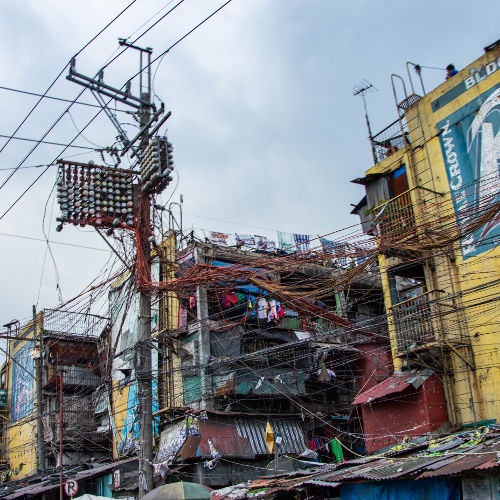© Mathilde Charlet
Fuel SCARCITY in the Philippines

The absence of a safe and reliable source of light, cooking fuel or to power basic appliances initially defines the root cause of the energy scarcity.
Without safe and affordable access to energy, people fulfill their energy needs with alternative solutions such as candles, kerosene fuel lights, diesel generator, car battery, and illegal connections to the electricity grid. The use of poor forms of energy jeopardizes their health, the safety of their houses and by extension the safety of their entire community.
In rural areas, remote locations and power shortages are two of the main factors of energy scarcity in the Philippines. As the Philippines is an archipelago composed of more than 7,000 islands, the terrain can prove difficult for centralized grids. Communities are hard to reach amongst the diverse landscapes since they are either isolated in the mountain or living on small islands. Therefore, communities remain off-grid because they are in non-viable areas for the standards grid technology.
The precarious situation of limited energy access also exists in urban locations in Metro Manila. In the informal settler’s areas and relocations sites, there is a large number of households connected illegally through “jumpers”. The requirements to get access to electricity can be prohibitive for the residents (high registration fees, official authorization, legal identification, land ownership); in addition there is often a lengthy delay to deploy the standard grids in new relocation sites. Homemade wiring connections are very low-quality with a high risk of electrocution. In general, the existing solutions used by inhabitants in areas with limited or no access to grid are hazardous. The higher the density of the community, the more prone to fire.
Without a stable access to light, people cannot easily cook, continue their work at night, and children cannot study after sunset. Without a power supply, people cannot use small appliances for their daily life, such as a mobile phone charger, for example.
Despite a supposed 90% nationwide energization rate in the Philippines, 1.5 million households, or approximately 8 million individuals, remain off grid. This does not include the households experiencing frequent power shortage or brownouts.
In addition to the varied geography of the Philippines, another barrier to reliable energy is household financial capacity percentage of the population live below the poverty line, earning less than $3.20US per day, while many more have seasonal or irregular income, which adds to the inability to have regular, reliable electricity. Individuals therefore have difficulties affording the registration fees to be legally connected, and struggle to pay consistently on a monthly basis. The Philippines is also the 2nd highest electricity rate in Asia.

© Mathilde Charlet
The national Department of Energy has a plan to reach 100% electrification in the Philippines by 2025. The plan involves private and public actors since electrification requires a huge capital of investments to set up a network. The goal is to increase access to sustainable energy in off-grid areas and improve the efficiency in the use of energy. “Every Filipino, in every part of the country, attains a higher quality of life through access to reliable, secure, quality and affordable electricity services”. However, in reality the model of the standard grid is unlikely to reach the entire country.
